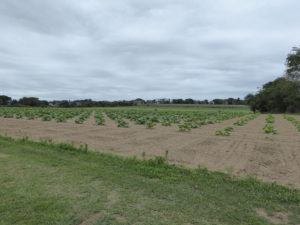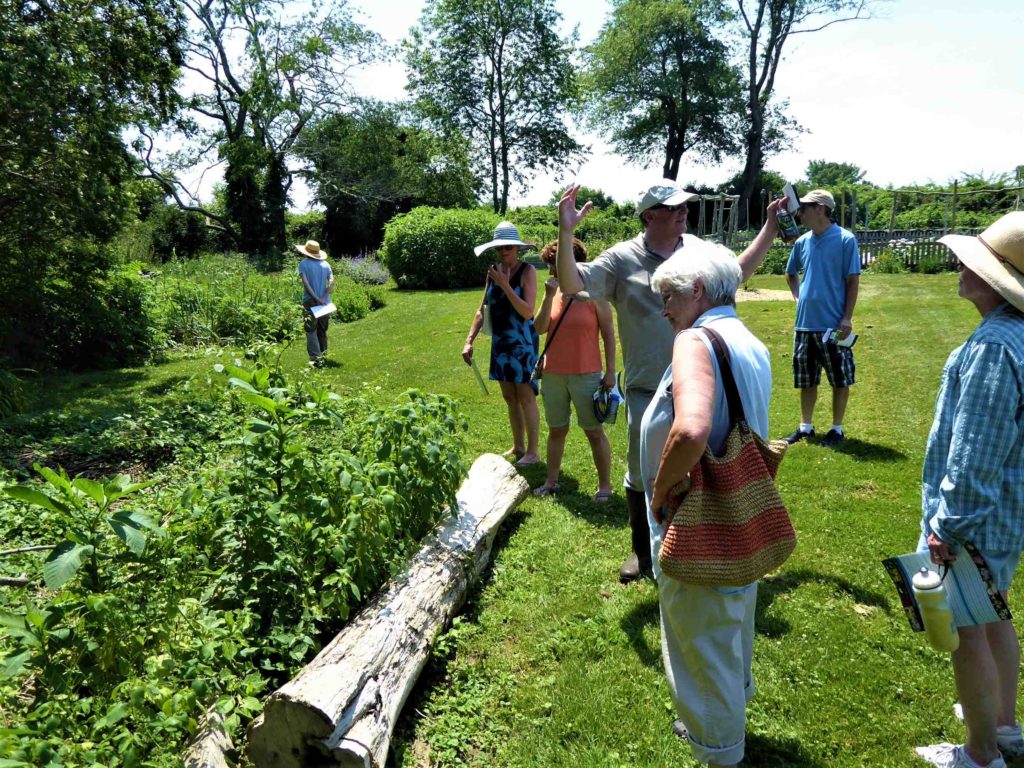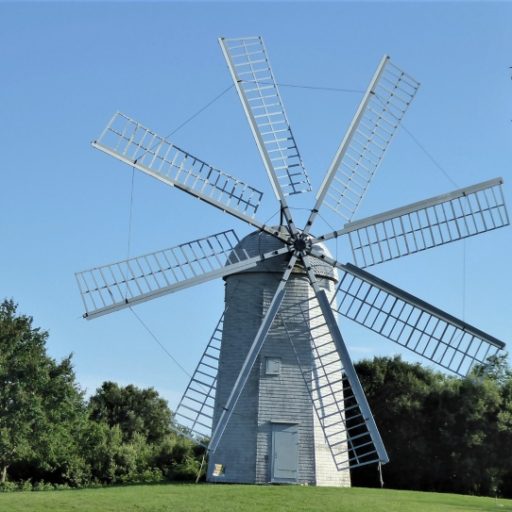Skip to content
David W Brown March 2022
I grew up on a hillside orchard in Connecticut managed by my dad. Specialists with the Soil Conservation Service of USDA helped him to establish the first contoured, terraced peach grove in the state.
SCS was born in the 1930s Dust Bowl days, during the Depression, thanks especially to the evangelistic efforts of a USDA staffer, Hugh Bennett. Their work inspired me as a school student who had seen how some of those dust storms blew all the way to New England.
I studied agronomy at UConn with the idea of becoming a soil conservationist. This led to seeing that to blend plant and soil sciences with economic realities is part of conservation too. A fulfilling part of my career as an ag econ prof was linked with SCS, which is now called the Natural Resources Conservation Service. In retirement, I have been involved with NRCS-related boards, task groups and partnerships in Rhode Island.
If a student again, I’d be drawn to a career related to soil conservation, watershed management, and plant/tree ecology — with applied economics and social psychology woven in. We have fewer farmers now, but “green” stewardship skills are much needed in urbanizing settings amid changing climates, stronger storms, mixed land uses, and contaminated soil runoffs. I’d be browsing the USDA/NRCS careers website, and also ways to gain useful experience while earning money for college via their Pathway Programs.

Unlike some environmental agencies, NRCS does not rely mainly on regulations and law enforcement. It uses positive approaches to encourage and enable owners and managers of farm. grazing and wood lands to introduce conservation plans and practices. These include local demonstrations, technical helps, landholder economic analyses, and subsidies of certain steps that carry benefits to others in nearby areas.
Here’s a link to NRCS programs and services in Rhode Island. As you see, NRCS has capabilities for tackling a range of needs besides soil erosion itself — stream pollution, livestock waste management, woodlot care, wildlife habitat, pest management, and energy conservation, among others. A hallmark is that NRCS staff blend plant and soil sciences, engineering, economics, and other fields in practical-minded ways that fit individual situations.
In support of this are the soil surveys conducted by SCS and then NRCS. These provide maps and data that are useful for land-use planning on farms and other open spaces. The land is classified into soil series that reflect tilth, parent material, slope, drainage, chemical content, and other traits relevant to plant selection and land stewardship. You and I can access this information via the USDA app, Web Soil Survey, but for the newcomer it’s a bit tricky. Jim Turene, an RI scientist with NRCS in RI has provided an informal guide for New England users that’s helpful.
Rather than being a top-down type agency, NRCS works through Conservation Districts that have citizen boards. The people on these boards help to spread the word about NRCS programs, and to adapt programs to local settings. They partner with other groups concerned with natural resources. They provide feedback to NRCS staff about how programs are working and conservation problems needing attention.
Rhode Island has three Conservation Districts. We in Newport and Bristol Counties are in the Eastern RI District. There are close working relationships with the other two — the Northern RI District and the Southern RI District. As you see, their websites provide much useful information and links, in friendly non-bureaucratic manner.

Declines of pollinating insects led NRCS in 2016 to team up with the Xerces Society Joint workshops and webinars have been encouraging a broader spectrum of native insects that are good pollinators. A useful pamphlet is “Pollinator Plants, Northeast Region”. For 24 species, this tells about blossoming times, water and management needs, and types of natural pollinators attracted. A major point is that monarch butterflies and milkweed plants are only part of the answer.
The USDA Natural Resources Conservation Service nationwide has mobilized an informative series of Conservation Webinars. This interfaces with Climate Science, and Forestry, and Bioenergy webinar series offered by related national and state agencies.
Each lasts about one hour, usually midday. While mainly for professional staff at working levels, we others are welcomed too. One can type in questions during a webinar. Besides the technical info and fresh ideas, to me these webinars are inspiring … they show how capable women and men in public service are doing good things and interacting well, despite budget cutbacks, political divides, and such. For students, these webinars can be a neat way to learn about career specialties that may be viable and interesting.
NRCS and the Districts are finding fresh ways to strengthen land stewardship by urban groups and new-era farm people. In our own Eastern RI District, school kids are learning sustainable agriculture, community gardens expanded, and residential storm water managed better via ERICD partnerships with innovative-minded local groups and funding sources.



